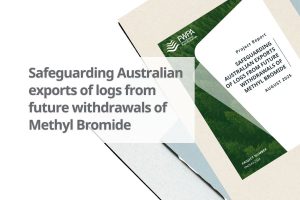Native to Europe, Asia and Northern Africa, the sirex wood wasp was first detected as an invasive species in Tasmania in 1952 and was accidentally introduced to mainland Australia in 1961. Plantation radiata pine and other pine species have proven to be particularly susceptible to wood wasp infestations.
Between 1986 and 87, it was found that when left unchecked, the financial damage the sirex wood wasp inflicted could total between one and four million dollars. Around the world, the total loss to trees from sirex wood wasps amounts to about $70 billion per year.
The good news is science may have an answer! Most insects like wasps can see green, blue and ultraviolet, and are attracted to pleasing colours. Meanwhile, pheromones are chemical smells that provoke specific responses, for instance many animals use pheromones to attract mates, again including wasps.
Quentin Guignard, a researcher from the University of Pretoria in South Africa, is conducting research which places electrodes in the wasp’s antennas and eyes, to monitor the electrical currents transmitting to their brains. These observations will help determine which specific pheromones and colours the sirex wood wasps can perceive, and how they react to them.
With the data collected, Guignard hopes to be able to develop targeted lures to attract the sirex wood wasps away from pine trees and exterminate them. This approach takes advantage of the insect’s natural instincts to travel towards a potential mate or certain colours.
This research is one small part of a global effort by scientists to protect trees and crops from invasive species. Here in Australia, the biological control agent Beddingia (previously Deladenus) siricidicola has been mostly successful in sterilising the female wood wasp and suppressing major outbreaks.
Source: The Conversation



